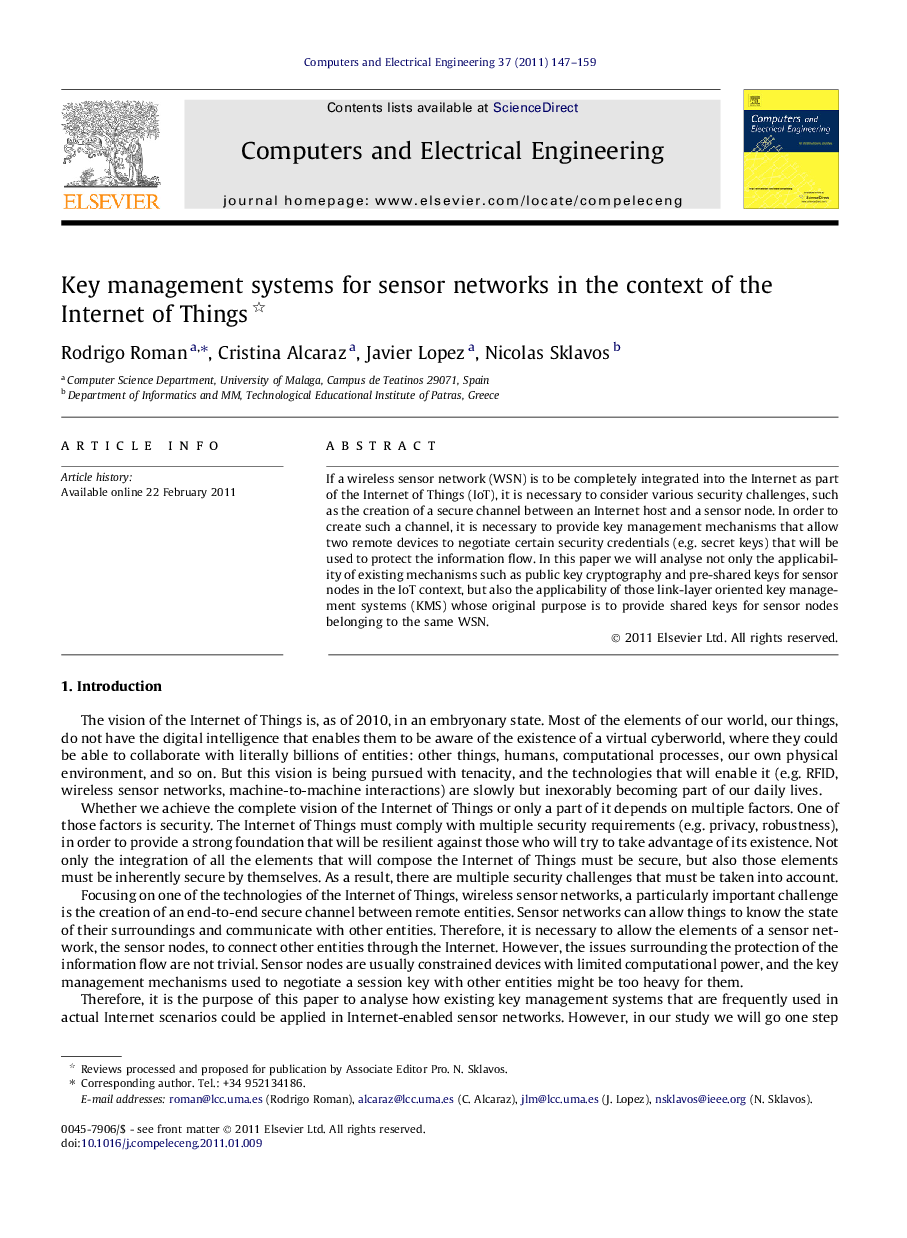| کد مقاله | کد نشریه | سال انتشار | مقاله انگلیسی | نسخه تمام متن |
|---|---|---|---|---|
| 455503 | 695380 | 2011 | 13 صفحه PDF | دانلود رایگان |

If a wireless sensor network (WSN) is to be completely integrated into the Internet as part of the Internet of Things (IoT), it is necessary to consider various security challenges, such as the creation of a secure channel between an Internet host and a sensor node. In order to create such a channel, it is necessary to provide key management mechanisms that allow two remote devices to negotiate certain security credentials (e.g. secret keys) that will be used to protect the information flow. In this paper we will analyse not only the applicability of existing mechanisms such as public key cryptography and pre-shared keys for sensor nodes in the IoT context, but also the applicability of those link-layer oriented key management systems (KMS) whose original purpose is to provide shared keys for sensor nodes belonging to the same WSN.
In order to create a secure channel between a sensor node and an Internet host, it is necessary to provide a key management mechanism (KMS) that will be used to negotiate certain security credentials (e.g. secret keys). The analyses performed in this paper show that (a) public key cryptography can be used for sensor nodes accessing external services, (b) pre-shared key approaches can be useful for server nodes in small real-world applications, but mathematical-based KMS (like the polynomial scheme) provide better properties if the application can afford the extra overhead.Figure optionsDownload as PowerPoint slide
Journal: Computers & Electrical Engineering - Volume 37, Issue 2, March 2011, Pages 147–159